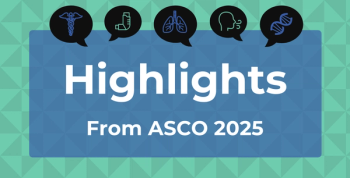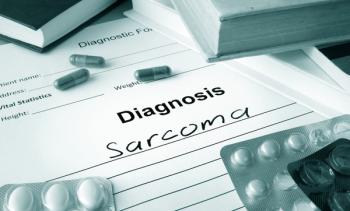
Sleep Apnea Linked to Complications of Impaired Vision, Potential Blindness in Patients With Diabetes
Research presented at the 123rd Annual Meeting of the American Academy of Ophthalmology 2019 in San Francisco, California, indicated sleep apnea as a risk factor for diabetic macular edema, a complication of diabetes that can cause vision loss or blindness.
Sleep apnea was indicated as a potential risk factor for diabetic macular edema (DME), a condition related to diabetes that can cause vision loss or blindness, according to research from Taiwan presented at the Annual Meeting of the American Academy of Ophthalmology (AAO) 2019.
Study results were presented at AAO 2019 in San Francisco, California, which runs from October 12 to October 15.
DME is an accumulation of fluid in the macula due to leaking blood vessels. This part of the retina controls our most detailed vision abilities, which can impair sight and lead to potential blindness. Prior to developing DME, patients with diabetes would first have diabetic retinopathy, which is caused by the poor management of their blood sugar levels. Diabetic retinopathy is a condition that damages the tiny blood vessels at the back of the eye and is the leading cause of blindness in the United States.
Researchers hypothesized that obstructive sleep apnea (OSA), a sleep disorder in which breathing intermittently stops and starts, could potentially contribute to the development and worsening of diabetic retinopathy. OSA disrupts sleep and causes blood oxygen levels to drop, which can initiate a variety of changes in the human body such as increasing insulin resistance, elevating inflammation, and raising blood pressure. All of these changes can damage the blood vessels at the back of the eye, indicating a possible correlation.
The study authors examined the relation between OSA and DME, as well as, the impact of OSA on DME through data derived from patients with type 2 diabetes (T2D) who received both optical coherence tomography and polysomnography at Chang Gung Memorial Hospital in Taiwan between June 1, 2009 and June 1, 2017:
- Refractory DME defined as >3 times of therapeutic solutions
- Analysis performed by generalized estimating equation for unilateral or bilateral eyes of each patient
- Study performed on 97 eyes of 51 patients divided into groups with (n = 31) and without (n = 61) DME
Study results exhibited a significant association between severe OSA and DME (odds ratio [OR] = 9.87; 95% CI, 2.06-47.3; P = .004), and a higher rate of patients with DME who had OSA than not (80.6% vs 45.5%). Refractory DME was also found significantly more in severe OSA than non-severe OSA (OR = 9.21; 95% CI, 1.08-78.69; P = .043), which highlights how heightened issues from OSA additionally led to worsening conditions of DME for patients.
Lead researcher Juifan Chiang, MD,
“This could allow for earlier medical intervention so patients can keep more of their vision and preserve their overall health as much as possible,” said Chiang.
Reference
Chiang J, et al. Association between obstructive sleep apnea and DME in patients with type 2 diabetes. Presented at the 2019 Annual Meeting of the American Academy of Ophthalmology on October 14, 2019.
Newsletter
Stay ahead of policy, cost, and value—subscribe to AJMC for expert insights at the intersection of clinical care and health economics.







































